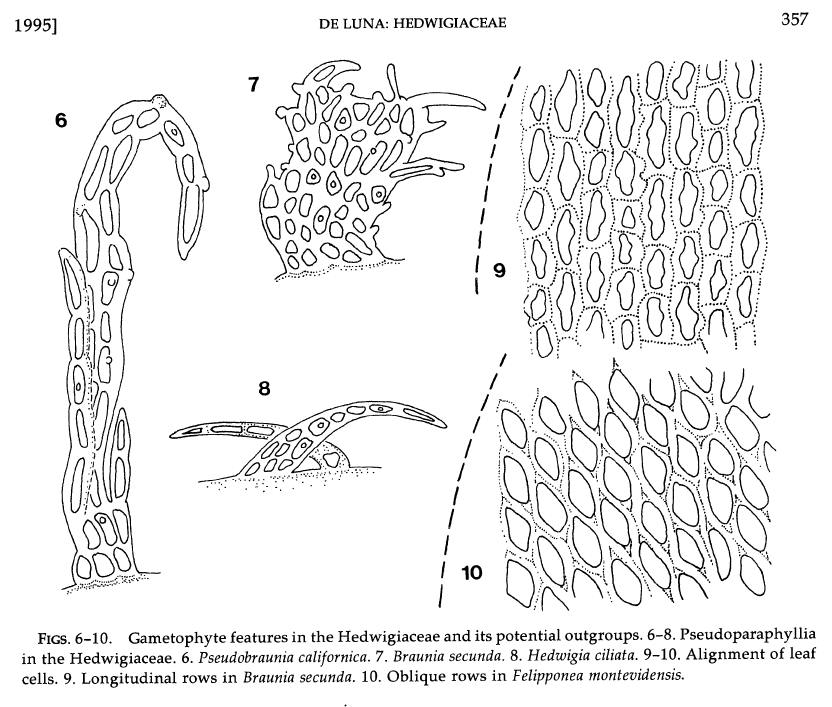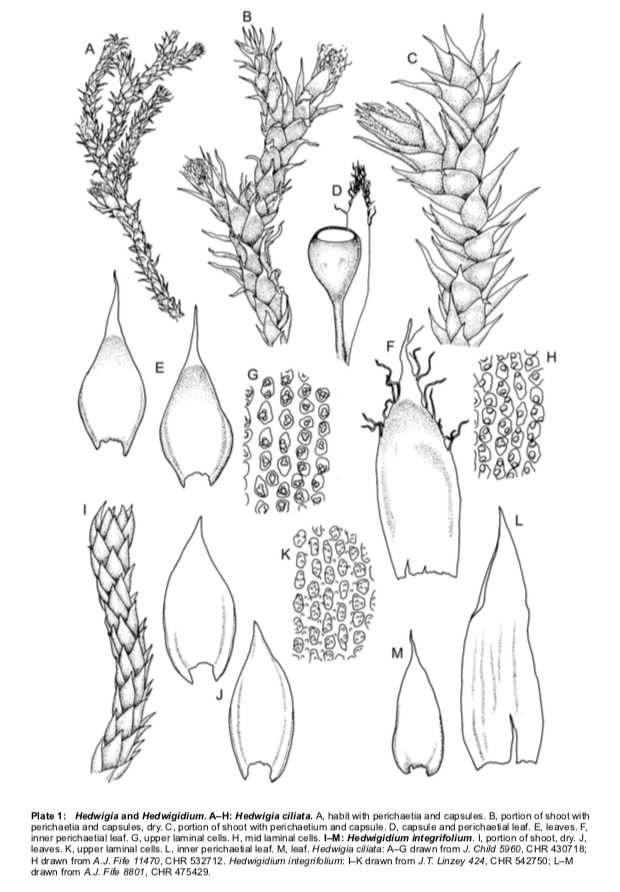
Introduction
HEDWIGIACEAE
Taxonomic information on the Hewigiaceae, with descriptions, keys, illustrations, photographs. Most information and pictures are mine, otherwise these are properly referenced and linked were possible. Hope you will find this useful. |
Contents of this website
|
Introduction |
The Hedwigiaceae consists of four genera (De Luna, 1995):
The gametophytes in all species in the family are acrocarpous, and the branching is sympodial (De Luna, 1990a). The habit is plagiotropous and postrate, thus reseambling a pleurocarpous matt. Most species grow over igneous rocks.
|
Hedwigia, Braunia and Hedwigidium growing together on rock. Cofre de Perote volcano, Mexico
|
At the base of branches, there are pseudoparaphylia, with papillose cells. Papillose pseudoparaphylia have not been observed in any other moss family. Leaves are ecostate. The upper leaf cells are subquadrate to rectangular thick-walled, often sinuose, and with central or marginal cell papillae. The pattern of leaf cell aerolation consists of mostly subquadrate cells aligned in longitudinal rows. The sporophyrtes in all species of the family have capsules without peristomes. Spores can be multicelular and most species have unicellular spores. Spore germination produces a globular protonemata (De Luna 1990b). The gametophytes of Hedwigia and Pseudobraunia are very similar in leaf shape, hyaline acumens, and tall papillae centrally placed over the cell lumen. The sporophytes are different in setae lengths, very short in Hedwigia, and long in Pseudobraunia. These two taxa are sister groups. It is a matter of ranking if these two genera are considered synonymous (De Luna 1992) or if they are considered different. The gametophytes of Hedwigidium and Braunia are also very similar. Leaves are more or less ovate to oblong and leaf cell papillae are marginal overarching the cell lumen. The sporophytes are different in setae lengths, very short in Hedwigidium, and long in Braunia. These two taxa are sister groups.
|
Figs 6-10 from: De Luna 1995.
Plate 1 from: Fife 2014. Hedwigiaceae. Flora of New Zealand.
|
De Luna E. 1990a. Developmental evidence of acrocarpy in Hedwigia ciliata (Musci: Hedwigiaceae). Tropical Bryology 2: 53 60. De Luna E. 1990b. Protonemal development in the Hedwigiaceae (Musci), and its systematic significance. Systematic Botany 15: 192-204. De Luna, E. 1995: The circumscription and phylogenetic relationships of the Hedwigiaceae (Musci). Systematic Botany 20: 347–373.
|
Pseudobraunia californica |
| |


